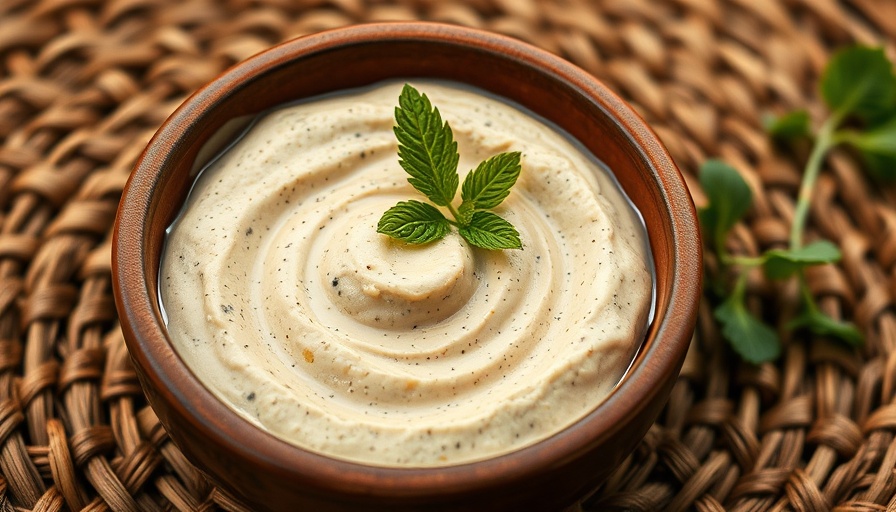
Discover the Magic of Swiss Chard Tahini Dip
Swiss chard tahini dip, known as Mutabbal Silik in Arabic, is a delightful and nutritious side dish that brings a taste of Middle Eastern cuisine straight into your kitchen. This creamy dip combines tender cooked chard ribs with a zesty tahini dressing flavored with garlic and lemon, making it an excellent accompaniment for various meals. Perhaps you’ve heard of other variations like Mutabbal Batinjan (eggplant dip) or Mutabbal Kousa (zucchini dip). These dishes highlight seasonal, fresh ingredients, which makes them not only tasty but also healthy!
A Taste of Home: The Comfort of Family Recipes
This Swiss chard tahini dip is not just a recipe; it's a tradition that resonates with many Lebanese families, evoking memories of family gatherings and shared meals. For many, it is a cherished dish passed down through generations. The process of preparing this dip—cutting, cooking, mashing—can feel meditative, connecting you to your roots while creating something delicious. When my family makes it chunky, we find that the texture and taste remind us of home, bridging generations and bringing us closer together, even if reminiscences are all we have left of those shared times.
The Nutritional Richness of Swiss Chard
Swiss chard is not only delicious but also packed with nutrients. Rich in vitamins A, C, and K, it supports immune health and provides antioxidants, making it an excellent addition to your diet. The tahini contributes healthy fats, enhancing the dip's overall nutritional profile. Each ingredient plays a role: fresh lemon juice is refreshing and adds vitamin C, while garlic introduces necessary antioxidants that boost our body's defenses. By integrating this dip into your meal planning, you're promoting a healthful lifestyle filled with vibrant flavors.
Tips for the Perfect Swiss Chard Tahini Dip
1. **Soaking the Chard:** To maintain the vibrant green color of the chard and prevent oxidation, soak the sliced ribs in water mixed with a tablespoon of vinegar before cooking. This simple step ensures they are as fresh and visually appealing as possible!
2. **Adjusting the Texture:** Everyone has different preferences when it comes to dips. If you like a creamier consistency, using a food processor makes it easy to achieve that perfect smooth texture. Alternatively, mashing by hand allows for a chunkier feel that can add character to the dish.
3. **Don’t Waste the Leaves:** Use the leftover chard leaves in delicious other dishes! They can be incorporated into salads, sautéed, or even used for stuffing, contributing even more nutrients without wasting any part of these amazing greens.
Storage and Serving Suggestions
This dip stores well in the refrigerator for up to a week, with flavors intensifying over time. Whether served cold as an appetizer or warm as a side, it pairs beautifully with pita bread, crackers, or raw vegetables. Its versatility makes it suitable for parties, family dinners, or cozy nights in.
Next time you're looking to impress your friends with a healthy and unique dip, remember the rich tradition and flavors behind Swiss chard tahini dip. Though delicious on its own, it can also complement a variety of dishes, making it a must-try!
 Add Row
Add Row  Add
Add 




 Add Row
Add Row  Add
Add 

Write A Comment